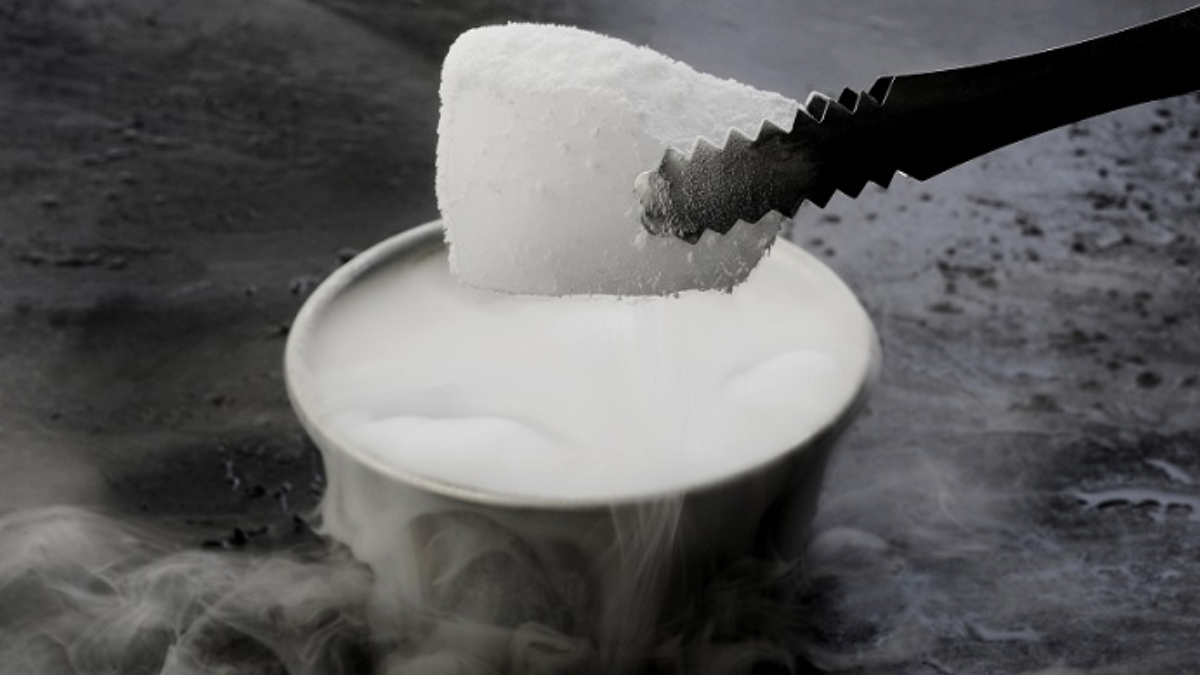What is dry ice and why did diners in Gurugram restaurant vomit blood after consuming it?
The Gurugram restaurant incident underscores the importance of safe dry ice handling. Proper ventilation and staff training are essential to prevent harm.
The Chilling Mystery: Dry Ice and the Unsettling Incident in a Gurugram Restaurant
In recent news, a startling incident unfolded in a restaurant in Gurugram, leaving diners in a state of panic and confusion. Reports emerged that several patrons experienced severe health issues, including vomiting blood, after consuming dry ice at the establishment. This incident has raised questions about the safety of using dry ice in food and beverage settings, prompting a closer look at what dry ice is and how it can be used safely.

Understanding Dry Ice:
Dry ice, scientifically known as solid carbon dioxide (CO2), is a substance that transforms directly from a gas to a solid at extremely low temperatures. Unlike regular ice, which is frozen water, dry ice is formed at a frigid -78.5 degrees Celsius (-109.3 degrees Fahrenheit). This makes it a unique and versatile material with various industrial, scientific, and recreational applications.
Read more: A Shift Towards Authentic Connections- Why Gen Z Is Ditching Dating Apps?
Common Uses of Dry Ice:
Food Preservation: Dry ice is frequently used in the food industry for its ability to keep items frozen during transportation. It is commonly employed to transport perishable goods, such as ice cream, frozen meats, and seafood, ensuring they remain at the desired temperature throughout the shipping process.
Special Effects: In the entertainment industry, dry ice is popular for creating theatrical smoke and fog effects. When dry ice comes into contact with warmer air, it sublimates, producing a dense, low-lying fog that adds a dramatic touch to stage performances and haunted houses.
Carbonation: Some beverage companies use dry ice to carbonate drinks, especially in the production of carbonated beverages. The release of carbon dioxide gas during the sublimation process creates effervescence, giving drinks a fizzy quality.

The Gurugram Incident:
The Gurugram restaurant incident has shed light on the potential dangers of mishandling dry ice, particularly in a food and beverage setting. Preliminary investigations suggest that the restaurant may have used dry ice to create a visually striking presentation for certain dishes. However, improper handling or excessive use of dry ice can lead to dangerous consequences.
Potential Risks:
Read more: Interior decor tips to make your house look cozy!
Inadequate Ventilation: Dry ice sublimates into carbon dioxide gas, which, when released in confined spaces with poor ventilation, can displace oxygen. Breathing in an environment with reduced oxygen levels can lead to respiratory distress and, in extreme cases, asphyxiation.
Direct Contact with Skin: Dry ice is extremely cold and can cause frostbite or severe skin injuries if handled without proper protection. Direct contact with dry ice should be avoided, and it should never be ingested.
Contamination of Food and Drinks: If not handled with care, dry ice can contaminate food and drinks with carbon dioxide, leading to adverse health effects when consumed. Excessive use or improper placement of dry ice near food items can result in the release of harmful gases.
Safety Measures:
To prevent incidents like the one in Gurugram, establishments using dry ice must adhere to strict safety guidelines:
- Proper Ventilation: Ensure that the venue has adequate ventilation to prevent the accumulation of carbon dioxide gas. Regular air circulation helps maintain a safe environment for both patrons and staff.
- Training and Education: Staff members should receive proper training on the safe handling of dry ice, including the use of protective equipment. This knowledge is crucial to avoid accidents and ensure the well-being of everyone in the vicinity.
- Limited Exposure: Dry ice should be used sparingly, and its exposure to food and drinks should be carefully controlled to avoid contamination. Establishments must follow recommended guidelines for the use of dry ice in food presentation.
We’re now on WhatsApp. Click to join.
Conclusion:
The incident in the Gurugram restaurant serves as a stark reminder of the importance of handling dry ice with the utmost care and following established safety protocols. While dry ice has various practical applications, its use in culinary presentations requires a thorough understanding of the potential risks involved. By prioritizing safety measures, restaurants and other establishments can harness the unique properties of dry ice without compromising the well-being of their patrons. As investigations into the Gurugram incident continue, it is hoped that lessons learned will contribute to improved safety practices in the handling of dry ice in the future.
Like this post?
Register at One World News to never miss out on videos, celeb interviews, and best reads.








